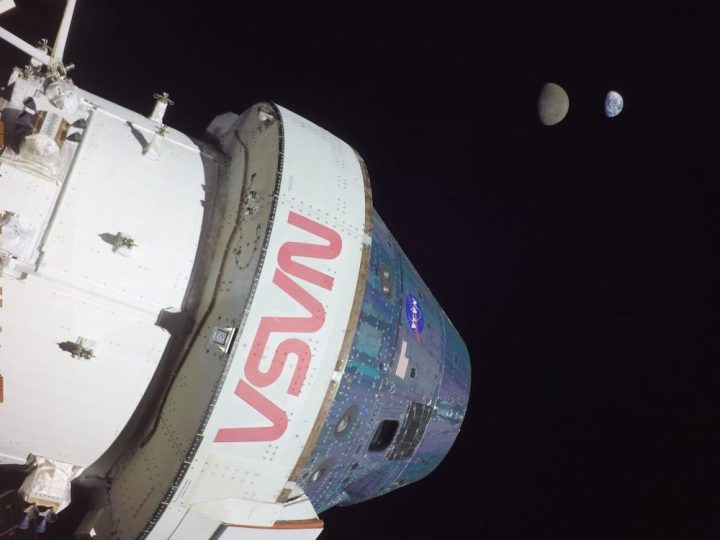
It’s amazing to believe that in just a couple of years from now, human beings will be gazing at the same view as shown in the image above.
The image features the view from NASA’s un-crewed Orion spacecraft during the current Artemis I mission, with the moon and Earth far away but clearly visible.
The spacecraft’s flight is a test for the upcoming Artemis II mission that will send astronauts on a flyby of the moon to within about 80 miles of the lunar surface, and will also include astonishing views like the one we see here.
The Artemis II mission is expected to follow the same path as the Orion is taking now. It will involve taking humans to a point about 268,000 miles from Earth — farther from our planet than any human has ever traveled. As of today, the furthest a human has traveled from Earth is 248,655 miles, a feat that took place during the Apollo 13 mission in 1970.
The Orion spacecraft launched aboard NASA’s new Space Launch System (SLS) rocket from the Kennedy Space Center in Florida on November 16.
“Because of the unbelievable can-do spirit, Artemis I has had extraordinary success and has completed a series of history-making events,” NASA Administrator Bill Nelson said this week. “It’s incredible just how smoothly this mission has gone, but this is a test. That’s what we do — we test it and we stress it.”
Jim Free, NASA’s associate administrator for exploration systems development, added: “Orion is performing so well we’re evaluating adding more test objectives to characterize the spacecraft further and reduce risk for future missions.”
The Artemis I mission is scheduled to finish with Orion splashing down in the Pacific Ocean off the coast of California on December 11.


